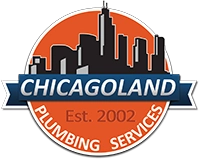Basement flooding is a predicament that no homeowner wishes to face. It can lead to tremendous property damage, causing financial strain and emotional distress. To mitigate such scenarios, installing a sump pump is an effective measure. Sump pumps act as guardians of your basement, diligently working to prevent flooding and water damage.
An essential component of any sump pump system is the switch that governs its operation. This switch is the trigger mechanism that springs the pump into action when water levels exceed a predetermined threshold in the sump pit. Picking the right sump pump switch can significantly enhance your sump pump's efficiency, preventing basement flooding.
This comprehensive guide delves into the different types of sump pump switches available today. It aims to equip you with the knowledge to select the best switch for your sump pump system.
Understanding Float Switches
Float switches stand out among the myriad options for sump pump switches due to their simplistic design and consistent reliability. They comprise a buoyant object tethered to an arm or a flexible line that moves with the changing water level. The buoyant object ascends with a rising water level, engaging the switch and activating the sump pump. Conversely, a decreasing water level leads to the descent of the buoyant object, disengaging the switch and halting the pump.
Vertical Float Switches
Vertical float switches are commonly used in sump pump systems operating in a vertical plane along a guide or track. A rising water level causes the float to ascend, which activates the switch and triggers the pump. As the water level recedes, the float correspondingly descends, disengaging the switch and ceasing the pump operation.
Benefits of Vertical Float Switches
Vertical float switches are known for their reliability and effectiveness in managing different water levels. However, they may not be an ideal choice for narrow sump pits due to their vertical movement. The vertical float's limited range could also hamper its effectiveness in situations where the water level varies significantly.
Tethered Float Switches
Tethered float switches involve a float linked to the pump via a flexible cord or tether. As the water level increases, the float rises, pulling the tether upwards. Once the tether reaches a specific angle or position, it triggers the switch, initiating the pump operation.
Benefits of Tethered Float Switches
Due to their design, tethered float switches have a greater range of motion than vertical float switches. They are well-suited for sump pits with narrow dimensions and can competently manage substantial water level fluctuations, ensuring reliable pump activation.
Pressure Switches
Pressure switches operate on the principle of water pressure changes in the sump pit. The accumulation of water in the sump pit generates pressure that activates the switch once a certain threshold is attained.
These switches employ a diaphragm or sensor within their assembly to perceive the changes in pressure induced by varying water levels. The switch is engaged upon reaching the preset pressure level, setting the pump in motion.
Benefits of Pressure Switches
Pressure switches can sense water levels without direct exposure to water, thus mitigating the risk of malfunction due to debris or fouling. They are generally reliable and suitable for environments with consistent water pressure.
Electronic Switches
Electronic switches represent the cutting edge in sump pump switch technology. These switches provide precise and reliable performance by incorporating sensors or solid-state components for superior accuracy.
Sensor-based Electronic Switches
These switches use sophisticated sensors, such as optical or ultrasonic sensors, to discern the water levels in the sump pit. By emitting signals or pulses that rebound off the water surface, these sensors calculate the time taken for the signal to return, thereby determining the water level.
Advantages of Sensor-based Electronic Switches
Sensor-based electronic switches detect highly accurate water levels, ensuring precise pump activation. Their immunity to debris or fouling is a major advantage over other switches, as it enhances their reliability and longevity.
Solid-state Electronic Switches
Solid-state electronic switches employ components like transistors or integrated circuits to discern water levels and manage the pump's operation. These switches depend on the conductivity or resistance changes in the water to ascertain the water level.
Advantages of Solid-state Electronic Switches
Solid-state electronic switches are compact, durable, and highly accurate in detecting water levels. Their resistance to mechanical wear and tear surpasses mechanical switches, enhancing their lifespan and reliability.
Navigating the Selection of the Right Sump Pump Switch
The selection of the right sump pump switch necessitates consideration of various factors. These include the type of sump pump, frequency and degree of water level variations, power source availability, and financial constraints.
Professional consultation or advice from experienced plumbers can be invaluable if the selection process seems overwhelming. They can assess your specific requirements, provide expert guidance, and ensure the correct installation of the switch.
Post-installation, regular maintenance and testing are vital to ascertain the continued functionality of the sump pump switch. Early detection and rectification of any issues can ensure that your sump pump system remains in optimal working condition, ready to protect your basement when required.
Conclusion
Choosing the appropriate sump pump switch is integral to maintaining an efficient and dependable sump pump system. It invests in safeguarding your basement and precious belongings from potential water damage. Remember, your sump pump is only as reliable as the switch that controls it. Therefore, make an informed choice and ensure your basement stays dry and secure.

